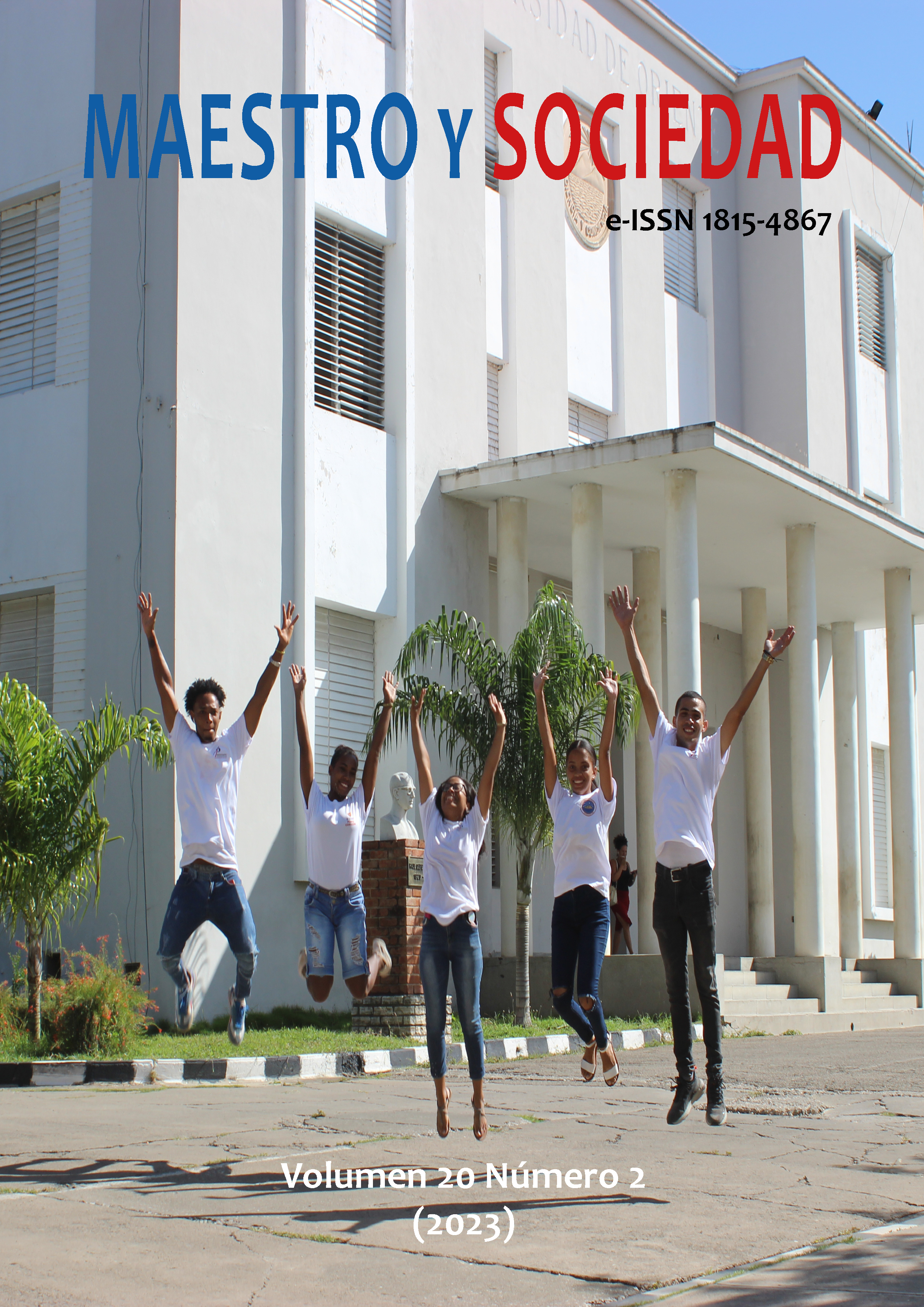Impact of the flipped classroom technique on active learning of middle school students
Impact of the flipped classroom technique on active learning of middle school students
Keywords:
Active techniques, flipped classroom, teaching-learning, critical thinkingAbstract
Introduction: The objective of the research was to establish the impact of the flipped classroom technique on the active learning of middle school students of the 12 de Octubre Basic Education School. Materials and methods: For the fulfillment of the study, the qualitative and quantitative methodology was used, in addition the Delphi method was used to consult experts, the research was descriptive, documentary, the technique coexisted in the survey, which helped to make the diagnosis. The same that was tabulated by the SPS25. Results: The one that allowed verifying the reliability of the instrument using Cronbach's Alpha, resulting in .96. It was found that the flipped classroom technique allows leaving traditional media to move to an active methodology, making students the active protagonists of their teaching-learning process. Discussion: The Flipped classroom methodology has benefited the way of teaching and learning because it allows the student to learn autonomously through different digital resources provided by the teacher in order to make learning dynamic and practical, improving academic, attitudinal and motivational. Conclusions: It significantly improves the learning achievements of the students, increasing their motivation and creativity, helping them to overcome their difficulties through individual, progressive learning, in the style of each one.
References
Alba, N., & Porlán, R. (2020). Docentes universitarios: Una formación centrada en la práctica. Morata.
Araya-Moya, S., Rodríguez, A., Badilla, N., & Marchena, K. (2022). El aula invertida como recurso didáctico en el contexto costarricense: estudio de caso sobre su implementación en una institución educativa de secundaria. Revista Educación, XLVI(1), 1-16. https://doi.org/10.15517/revedu.v46i1.44333
Cedeño-Escobar, M., & Vigueras-Moreno, J. (2020). Aula invertida una estrategia motivadora de enseñanza para estudiantes de educación general básica. Dominio de las Ciencias, VI(3), 878-897.
Chong-Baque, P., & Marcillo-García, C. (2020). Estrategias pedagógicas innovadoras en entornos virtuales de aprendizaje. Dominio de las Ciencias, VI(3), 56-77. http://dx.doi.org/10.23857/dc.v6i3.1274
Equipo de Enseñanza y Aprendizaje, Cambridge International. (2019). Cambridge Assessment International Education. Aprendizaje activo. https://www.cambridgeinternational.org/Images/579618-active-learning-spanish-.pdf
Galvéz, M. d., Cáceres, C., & Esteban, N. (2021). Estrategias de adaptación metodológica y tecnológica ante la pandemia del COVID-19 en la universidad. Dykinson.
Loor, M., & Vélez, C. (2021). El Aula Invertida y su Aplicación para el Aprendizaje Significativo en los estudiantes de la básica media de la Unidad Educativa “Victoria de Junín” de la Parroquia la Unión del Cantón Santa Ana. Universidad San Gregorio de Portoviejo. http://repositorio.sangregorio.edu.ec/handle/123456789/1899
Maliza, W., Veloz, Á., & Tisalema, M. (2019). El aula invertida como mètodo social de enseñanza en los institutos tecnológicos de la Provincia de Bolivar. Revista Ciencia e Investigación, IV(Extra 1), 119-129. https://doi.org/10.5281/zenodo.3594046
Merla, A., & Yáñez, C. (2016). El aula invertida como estrategia para la mejora del rendimiento académico. Revista Mexicana de Bachillerato a Distancia, VIII(16), 68-78. http://revistas.unam.mx/index.php/rmbd/article/view/57108/50653
Orosz, A., Ortega, D., Monzón, M., & Sarango, F. (Septiembre de 2008). Observatorio de la Educación- UNAE. El aprendizaje activo para las clases de inglés como lengua extranjera. http://201.159.222.12:8080/bitstream/56000/451/3/cuadernos%20de%20P.E.%203.pdf
Restrepo, R., & Waks, L. (2018). Observatorio UNAE. Un aprendizaje activo para el aula: Una síntesis de fundamentos y técnicas. https://unae.edu.ec/wp-content/uploads/2019/11/cuaderno-2.pdf
Rivera, F. (2019). Aula invertida: Un modelo como alternativa de docencia en ingeniería. Universitaria Abya-Yala.
Ruiz, H. (2020). ¿Cómo aprendemos?: Una aproximación científica al aprendizaje y la enseñanza. Grao.
Ventosilla, D., Santa, H., Ostos, F., & Flores, A. (2021). Aula invertida como herramienta para el logro de aprendizaje autónomo en estudiantes universitarios. Revista de Psicología Educativa, IX(1), 1-12. https://doi.org/10.20511/pyr2021.v9n1.1043
Zainuddin, Z., & Halili, S. (Abril de 2016). Investigación de aula invertida y tendencias de diferentes campos de estudio. Revista internacional de investigación en aprendizaje abierto y distribuido, XVII(3), 313-340. https://doi.org/10.19173/irrodl.v17i3.2274
Downloads
Published
How to Cite
Issue
Section
License
Copyright (c) 2023 Ernestina María Olvera Carrasco, Lilia Moncerrate Villacís Zambrano

This work is licensed under a Creative Commons Attribution-NonCommercial-NoDerivatives 4.0 International License.
This journal provides immediate open access to its content, based on the principle that offering the public free access to research helps a greater global exchange of knowledge. Each author is responsible for the content of each of their articles.



























 Universidad de Oriente
Universidad de Oriente 